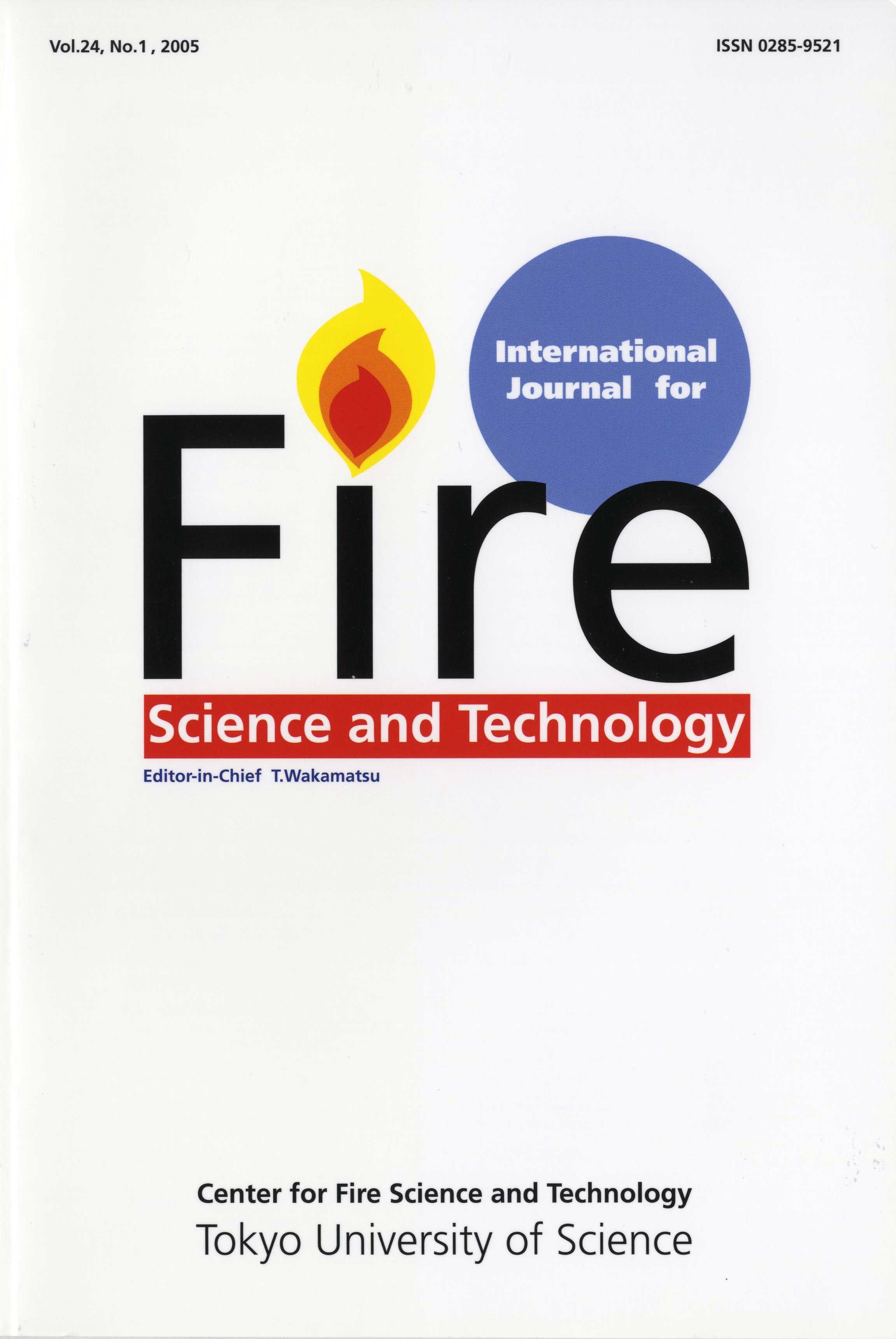All issues

Volume 24, Issue 1
Displaying 1-2 of 2 articles from this issue
- |<
- <
- 1
- >
- >|
-
W. G. Weng, Yuji Hasemi2005 Volume 24 Issue 1 Pages 1-15
Published: 2005
Released on J-STAGE: June 08, 2007
JOURNAL FREE ACCESSIn this paper, an approach for modeling flame spread beneath a pyrolysing surface of a charring solid is developed. The presented model consists of a one-dimensional ceiling flame spread submodel based on SQW equation developed for upward flame spread, and a one-dimensional pyrolysis submodel. These two submodels are numerically solved using a conditionally stable forward Euler method and a Runge-Kutta method for stiff problems, respectively. The existing experimental data (the ceiling flame spread beneath medium density fibreboard (MDF)) are used for comparison to validate the model. The comparison results show that the predictions of the maximum distance of ignition front and the heat release rate per unit width are in good agreement with the experiments. Discussions with the effects of the heat of gasification on the flame length, the pyrolysis front and the heat release rate indicate that it is a very important parameter in the present model.View full abstractDownload PDF (828K) -
Jun-ichi Yamaguchi, Takeyoshi Tanaka2005 Volume 24 Issue 1 Pages 17-38
Published: 2005
Released on J-STAGE: June 08, 2007
JOURNAL FREE ACCESSIn order to develop a means to assess the effectiveness of some design elements for preventing upper floor fire spread, such as window geometry and arrangement of eaves above windows, possibility of scaling of window jet plume temperature distribution by means of a nondimensional temperature was explored. Experiments were conducted using two geometrically similar setups having different sizes to investigate the applicability of the non-dimensional temperature to various conditions.
It was found that the non-dimensional temperature is independent of size and fire temperature but is uniquely determined only by geometrical conditions, that is, it is possible to predict real scale window jet plume temperatures based on the results of reduced scale experiments.View full abstractDownload PDF (5084K)
- |<
- <
- 1
- >
- >|